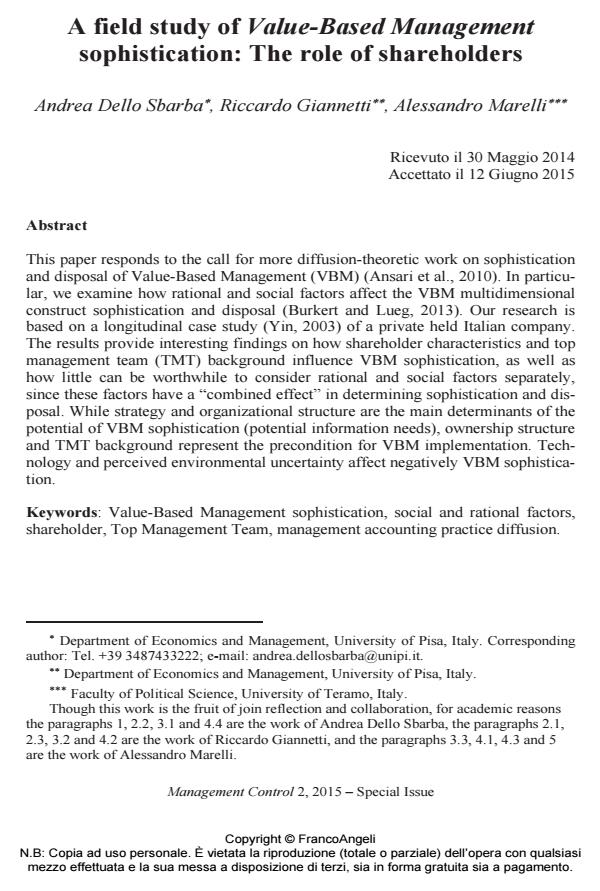A field study of Value-Based Management sophistication: The role of shareholders
Titolo Rivista MANAGEMENT CONTROL
Autori/Curatori Andrea Dello Sbarba, Riccardo Giannetti, Alessandro Marelli
Anno di pubblicazione 2015 Fascicolo 2015/2
Lingua Inglese Numero pagine 36 P. 65-100 Dimensione file 183 KB
DOI 10.3280/MACO2015-002004
Il DOI è il codice a barre della proprietà intellettuale: per saperne di più
clicca qui
Qui sotto puoi vedere in anteprima la prima pagina di questo articolo.
Se questo articolo ti interessa, lo puoi acquistare (e scaricare in formato pdf) seguendo le facili indicazioni per acquistare il download credit. Acquista Download Credits per scaricare questo Articolo in formato PDF

FrancoAngeli è membro della Publishers International Linking Association, Inc (PILA)associazione indipendente e non profit per facilitare (attraverso i servizi tecnologici implementati da CrossRef.org) l’accesso degli studiosi ai contenuti digitali nelle pubblicazioni professionali e scientifiche
This paper responds to the call for more diffusion-theoretic work on sophistication and disposal of Value-Based Management (VBM) (Ansari et al., 2010). In particular, we examine how rational and social factors affect the VBM multidimensional construct sophistication and disposal (Burkert and Lueg, 2013). Our research is based on a longitudinal case study (Yin, 2003) of a private held Italian company. The results provide interesting findings on how shareholder characteristics and top management team (TMT) background influence VBM sophistication, as well as how little can be worthwhile to consider rational and social factors separately, since these factors have a "combined effect" in determining sophistication and disposal. While strategy and organizational structure are the main determinants of the potential of VBM sophistication (potential information needs), ownership structure and TMT background represent the precondition for VBM implementation. Technology and perceived environmental uncertainty affect negatively VBM sophistication.
Parole chiave:Value-Based Management sophistication, social and rational factors, shareholder, Top Management Team, management accounting practice diffusion.
- Value-based Management System e performance. Il ruolo di moderazione della strategia ibrida e della turbolenza ambientale Filippo Zanin, Giulio Corazza, in MANAGEMENT CONTROL 3/2024 pp.63
DOI: 10.3280/MACO2023-003004
Andrea Dello Sbarba, Riccardo Giannetti, Alessandro Marelli, A field study of Value-Based Management sophistication: The role of shareholders in "MANAGEMENT CONTROL" 2/2015, pp 65-100, DOI: 10.3280/MACO2015-002004